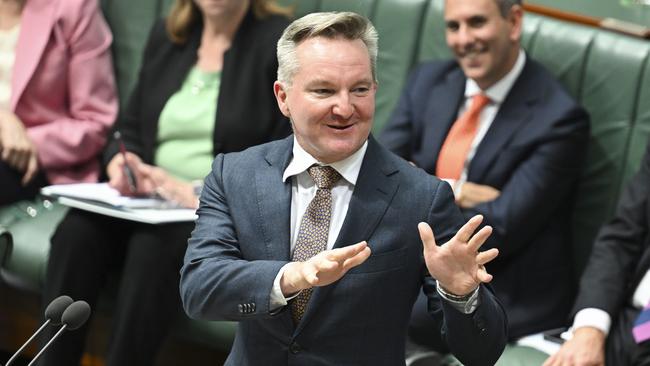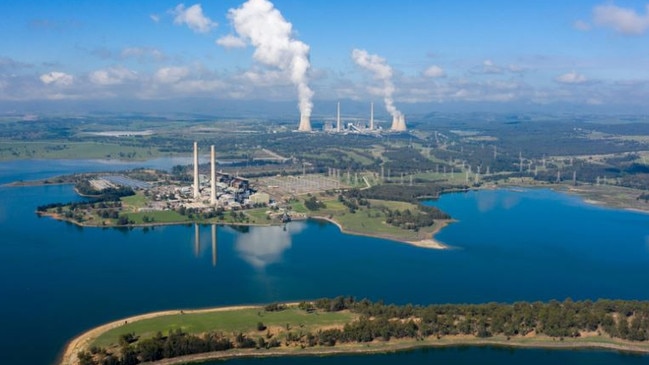The strategy Chris Bowen will likely use to go nuclear on the Coalition over energy policy costings
Expect Energy Minister Chris Bowen to latch on to one figure as he attempts to skewer the Coalition over new energy policy costings, writes John Rolfe.
Opinion
Don't miss out on the headlines from Opinion. Followed categories will be added to My News.
“The sun doesn’t send a bill.”
That’s a quote from federal Energy Minister Chris Bowen, in a soft interview with Peter FitzSimons recently.
Catchy.
But as Chris Uhlmann’s documentary on Sky News subsequently showed, the sun does send a bill.
Utility scale solar has to be connected to the network via new transmission lines, which are far from free. At least 10,000 kilometres of new power lines must be built. The Opposition says the figure is more like 28,000km.

When it can’t be used immediately, renewable energy has to be stored, for instance, in batteries.
Then there’s the “firming” capacity, such as pumped hydro or gas-fired power, to back up a system dominated by electricity from the sun (and wind).
Opposition leader Peter Dutton and shadow energy minister Ted O’Brien have a new bill for Mr Bowen and his boss, Anthony Albanese: $263 billion.
That’s the cost difference between the Coalition and government visions for Australia’s power grid: $594bn vs $331bn.
At the federal level, arguably there is no policy area where there is a bigger gap between Labor and the Coalition.
From Friday, the Opposition can put a number – a very big number – on the size of that gap.
It is the new $275 – that being the amount Labor promised to reduce power bills by in this term, only for them to go up by far more.
That was a gift from Labor.
While the $263bn cost gap is a doozy, there is a gift for Mr Bowen in the new Frontier costings. The consultancy’s decision to revise down the price of Labor’s renewables-heavy approach by nearly $50bn is all the opening he needs.
It seemed like a smart move to ask Frontier to cost Labor’s plan and release that first. It set a new baseline for going all-in on the sun and wind, at $642bn – including $67bn for new transmission.

But now, four weeks on, Labor’s plan costs $594bn.
Mr Bowen will have a field day with that. He’ll also likely make much of the absence of detail about where the first reactor will be built and when, and what technology it will use.
Expect him to also mock the Coalition for choosing to be modelled on the “progressive” outlook for future demand, which assumes energy needs will grow more slowly than the government’s preferred “step change” scenario.
He could say it shows that under Peter Dutton, Australia will be a smaller economy.
The Coalition, meanwhile, will likely stress that their plan is cheaper and more reliable. It will keep the lights on and bills down.





